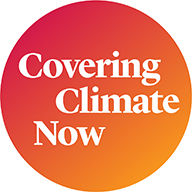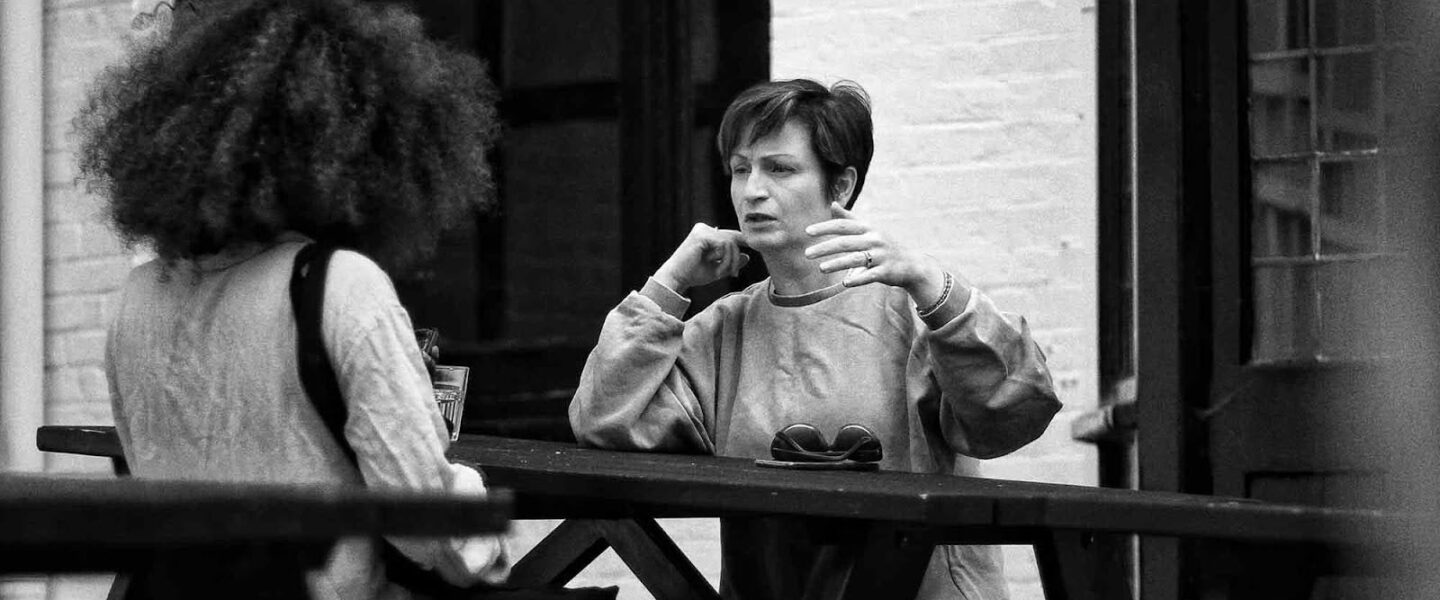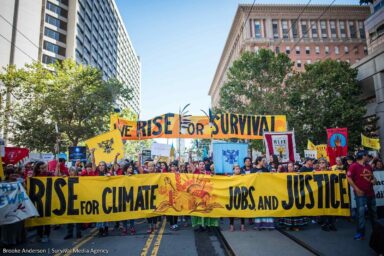Really, they do — they just don’t think you want to talk about it. So stop being afraid of pushback, break the “climate silence,” and start a conversation.
|
Listen To This Story
|
To recognize Earth Week, WhoWhatWhy is running a new piece from our partners at Covering Climate Now each day this week. We are committed to covering the climate crisis and other environmental struggles humanity faces each and every week. Read more of our environmental coverage here.
This story is part of The 89 Percent Project, a new initiative of Covering Climate Now.
•
In these divided times, it seems everyone is ready to start an argument at the drop of a hat, especially on topics that have been made so politically polarizing, like climate change.
But is that true? Are conversations about climate change really doomed before they even start?
As it turns out, they’re not — we just think they are, so we avoid having these conversations in the first place.
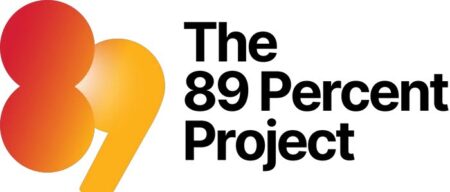
Here’s the reality: According to multiple surveys and scientific studies, between 80-89 percent of people want the world’s governments to take stronger action against climate change. At the same time, the people who want action don’t realize they’re in the majority because not enough people are talking about it — especially in the media.
One new study, published April 17 in PLOS Climate, found that this lack of media coverage contributes to a negative feedback loop that perpetuates “climate silence.”
And it isn’t just the media: The study found that “perceived social norms” — specifically, the incorrect perception that other members of society may discount climate science — are the major factor influencing whether or not we have climate conversations.
The conclusions are clear: People don’t hear enough people talking about climate change, so they don’t talk about it themselves. And that inability or unwillingness to discuss such an overwhelming issue slows or stops climate progress on both individual and societal levels.
But we can escape this feedback loop. The paper suggested several ways to break through this climate silence: describing why climate change worries you, or puts you or something you care about at risk; communicating the reality that most people are concerned about climate change; sharing news articles; and even including climate messages in public entertainment.
I reached out to lead author Margaret Orr from George Mason University to discuss “climate silence,” its real-world implications, the media’s role, and what we all can do about it. Our phone and email conversations follow.
Why did you conduct this study? Had you observed this silence in action, or attempts to break through it, and was it something you wanted to quantify? (I also see you’ve studied misinformation; is that related?)
This study originated as a project for an interpersonal communication class at George Mason University. We knew from previous research, commentary from climate scientists and activists, and our own experiences that very few people discuss climate change despite it being credited as one of the most important climate actions. Because of our interest in using research to help drive concrete climate action, we wanted to investigate ways that climate conversations could be encouraged amongst the public.
In short, we wanted to identify barriers to climate conversation in order to work on breaking them down. This research wasn’t directly driven by my interest in misinformation, but it’s tangentially related in that some of these conversations could be important for building trust and debunking misinformation.
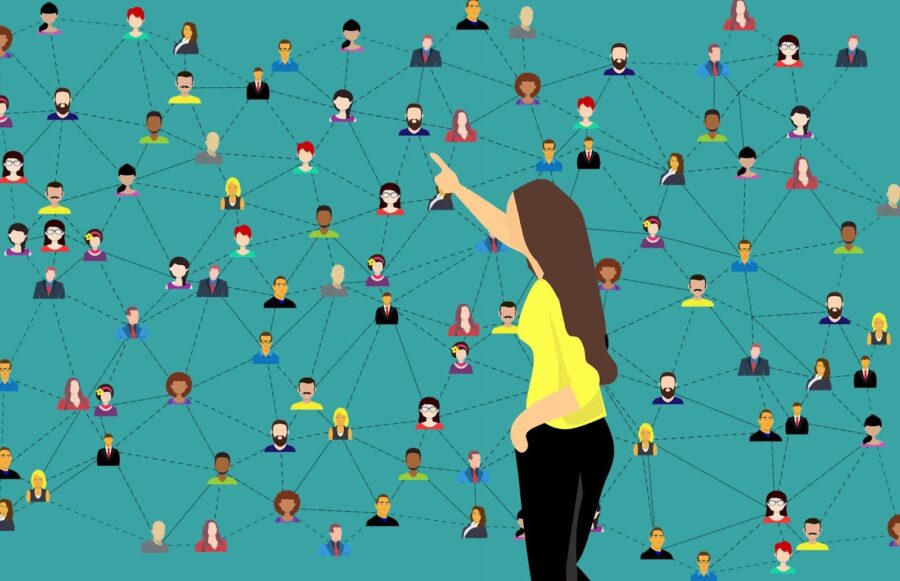
What are the costs of this silence? Lack of political or societal action? Allowing misinformation to spread? Or does it hurt on a more individual level, by dulling the belief that we can make a difference?
All of the above! We talk about spiral of silence theory in the paper, which is a self-reinforcing cycle. If no one talks about climate change, people become less likely to talk about it because it is perceived as a taboo topic. The less people talk about climate change, the less it is thought of as a problem, which in turn leads to less action because people don’t care or don’t know what to do about the problem.
Has conducting this study affected how you communicate about climate change in any way?
It’s made me more aware of how important it is for me to talk about climate change, especially as someone who has an atmospheric science degree and some expertise in climate science itself. As my hero, Rachel Carson, once said: “Knowing what I do, there would be no peace for me if I kept silent.”
The study has also helped me to focus on discussing the topics that we found to be correlated to more climate conversations. I highlight the scientific consensus, the fact that a majority of Americans support climate actions, and ways that people’s individual lifestyles could be at risk due to climate change.
What responsibility do you feel that our community leaders should be talking about this? Another study published this month found that 90 percent of Christian religious leaders believe humans are driving climate change, but they don’t talk about it from the pulpit.
I think it can be tough when you expect pushback, and that’s part of the root of our studies — that people expect pushback when they talk about climate change.
If there is interest, instead of saying “I’m going to stand up here and bring this to my congregation,” it can be something more like planting seeds and letting it grow almost from the grassroots, things like that.
Other local community leaders could do very similar things. Plant those seeds in the community and then bring it up to the mayor of a town or something. Instead of coming in with a hammer and saying climate change, let it come from the grassroots.
You mentioned people being afraid that they’re going to get some pushback if they bring up climate change, and obviously we’re anticipating this kind of political discord, this distance in our conversations. Do we start with things like, “Hey, I saved energy by doing this thing,” or something simple like that that kind of breaks through the barrier?
Yeah, something simple and personal. Connecting it to that personal, shared value is quite effective.
The social media landscape has changed so much in recent years, especially when it comes to news links, which many platforms actively suppress. Do you still see it as an effective way to break through the silence barrier?
Social media can be helpful for interpersonal discussion, but those discussions can often become exhausting, and you feel like you’re getting nowhere.
My answer here comes a little bit more from my misinformation research than this study itself — when using social media, think of the “lurkers.” We hear from people with opinions that lean heavily towards one side or the other of an issue, but we don’t hear from people with less strong opinions or who are more undecided on a matter. They might be reading a comment section and your effort to spread truth about climate change is likely to reach them without you ever knowing it. Social media in today’s world might be better used as a platform for personal stories and experiences rather than sharing news links.
You mention entertainment as an effective communication tool. Have you noticed any particularly effective efforts lately?
The first thing coming to mind here is the TV show Top Chef. I can’t cite a specific season or episode, because I like to use old seasons as background while I work and they can sometimes blur together, but there have been a few instances where chefs on the show mentioned how climate change is affecting the availability of ingredients that a given region is known for — seafood, for example. Little “sprinkles” of climate change like this always impress me, because it helps connect to things that the audience cares about.
It seems to me that a lot of the stuff I read that isn’t specifically about the environment is still making some mention of climate or the environment, and that feels like a good way to enter into these conversations with people.
There’s kind of an element of catching people almost off guard, like they’re not coming in thinking about climate change, but then, now we are thinking about it. I think that’s a unique opportunity to open that dialogue and have it come through something that people care about.
One of the things that I love to do — and I think this I originally heard this from Katharine Hayhoe — is to connect with people on what they value. If someone is interested in food and cooking, that’s something they value, so we can connect on that as opposed to just kind of coming in talking about climate change more broadly. You can start with that common ground.
Now, from the flip side, is there a way to make this [effort for communication] more active? Are there ways we can engage people a little bit more directly in conversations about climate? Something like, “Hey, have you ever seen these plants pop up this early in the season,” or something like that? Can we push these conversations a little bit?
Definitely. I’ve seen that come up in conversations that I have — you know, the crocuses are up in February, things like that, those shared experiences and personal experiences.
How do you hope people will respond to this paper or act based on what you’ve presented?
I think we’re hoping that people who are in these communication positions — whether it’s journalists, broadcast meteorologists, community leaders — would then be able to take the topics that we found, spur a conversation, and be able to think about how they can communicate using those topics.
What other advice might you offer to the media in the context of The 89 Percent Project?
I would say that it’s important for journalists to connect to local stories and communities. “A lot of Americans want climate action” is great; “A lot of people in your state/city/community want climate action” is even better.
Focusing on action is also helpful. Highlight examples of action that’s already working and is easy to adopt. Local composting efforts, easy ways to save energy, local solar panel incentive programs come to mind. Increased climate coverage was also found in our study to increase conversation, so just by publishing climate stories, the project will help break silences.
We also found that norms, or people’s perceptions of what their peers do or think, are very important in spurring conversation — so highlighting these majorities will also be super helpful!
This story by John R. Platt was originally published by The Revelator and is part of Covering Climate Now, a global journalism collaboration strengthening coverage of the climate story. WhoWhatWhy has been a partner in Covering Climate Now since its inception in 2019.
